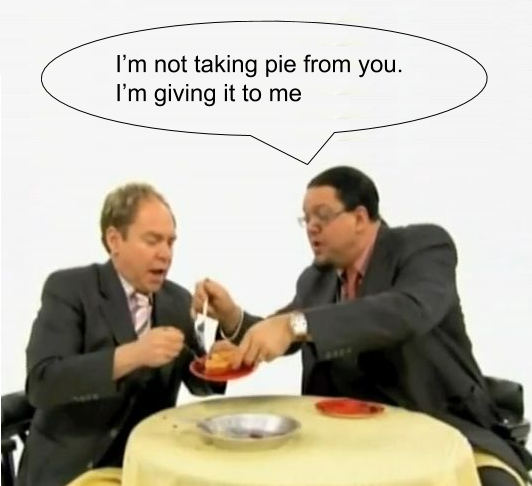Ready to see the market clearly?
Sign up now and make smarter trades today
Trading Basics
January 18, 2024
SHARE
Zero-Sum Game in Trading, A Practical Approach
Is trading a zero-sum game?
The total sum of profits and losses (P&L) of all traders over any period of time is zero assuming that the system is closed.

Closed system means that a total amount of money and assets do not change over a given period of time. In such case we can demonstrate the zero-sum principle as following:
Imagine that there is just a single trader in a particular isolated market, and he holds a certain amount of assets and money. Let’s assume there is no self-trade prevention system and commissions are zero. it’s evident that this trader can neither gain nor lose to himself over any period of time.
Now imagine that he randomly splits his money and assets into number of trading accounts, and appoints a trader to each of them. Still, the total sum of P&L will remain zero. Same is true if these traders initially were individual traders.
In reality, the system isn’t closed. Production increases the amount and value of assets, money can be added or taken out of the system. However, for day trading those factors usually are more negligible than, for instance, commissions, which make the sum of P&L negative for traders.
How should it affect my trading strategy?
In order for you to make a profit, someone else has to lose by making transactions with you when you enter a position and when you exit it. Most probably it’s not the same trader, but as shown above, this doesn’t matter. Let’s call that trader a weaker competitor.
At the same time, you need to avoid making transactions with stronger competitors that would do the same to you. But not all of the other market participants are your competitors. Some of them are allies who by their actions move the price in the direction desired for you or give useful signals.
To design a profitable trading strategy, it is essential to describe the profiles of its allies and competitors by identifying its strength and weaknesses. Justify why your strategy is going to make transactions with weaker competitors and how it will avoid transactions with stronger competitors. Make sure it has the following relations with other market participants:
| Weak | Strong | |
| Competitors | Make transactions with them. They sell to you at a lower price, and buy from you at a higher price. | Avoid transactions with them. For them, you are a weak competitor. |
| Allies | They move the price in the direction desirable for you after you executed the order. | They provide you useful signals thatallow making trading decisions earlier than weak allies. |
Limited lifespan of “good” trading strategies
The market always tends to equilibrium. Finding a profitable trading strategy means having high ROI (return on the investment) on the effort to develop, implement, and to run it. Ironically, such high ROI is also called market inefficiency.
These opportunities attract other traders and investors who continuously search for trading opportunities. They may not find exactly your strategy, but a similar one. This increases the competition over the overlapping part and thus makes the market more “efficient” by reducing the profitability of that strategy, reaching the equilibrium or even overshooting into the negative area.
Here is an example of our R&D playground. We have developed a virtual exchange, and generated hundreds of simple trading agents who can randomly send orders to that exchange, and also to modify or cancel their orders as in real exchange. The longer the trading session was, the wider was the distribution of the profits (P&L) of the agents. As expected, the total sum of their P&L at each moment during the trading session as well as at the end was zero.
Then we created another generator of trading agents. This one aimed to mimic the behavior of a very primitive Market Making by increasing the chances of sending a Sell order above the current price and a Buy order below it. After mixing the two groups in a single trading session, we found that “market makers” performed significantly better and had positive P&L while almost all agents from the first group had negative P&L.
Obviously, a human trader from the first group would decide to switch to the market making strategy in such environment, and at some point, there would be no traders in the first group to take advantage of. Also, because the trading strategy of market makers was so primitive, there is a place for another trading strategy that exploits their weak spots such as price trends and sharp movements.
The timing factor

Because of the limited lifespan of profitable trading strategies, traders continuously seek for new ones. That also includes large firms that run powerful computers 24/7 looking for patterns in vast amounts of historical market data.
To avoid false positive errors, they tune pattern detection algorithms for a certain level of statistical significance. Once such pattern is detected, traders begin using it for trading. We can ask a question: why this pattern existed in the first place? Or in other words, why does this market inefficiency exist?
The answer is because until now this pattern didn’t cross the threshold of statistical significance. Therefore all other traders even if they also examined it, rejected and overlooked it. Until now… But from this point, it’s a race between many to get an edge and thus to bring the market back to equilibrium.
Conclusion
Any fundamentally profitable trading strategy is a temporary opportunity. When examining a potentially profitable trading strategy we need to be able to answer the following questions: Why and how this strategy will stop being profitable? Will we notice when it happens? If we don’t have answers to these questions, then probably this strategy contains some unjustified assumptions.